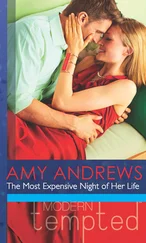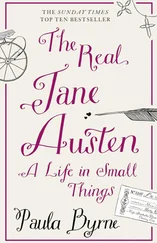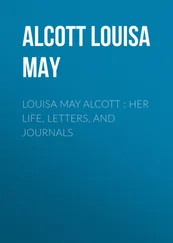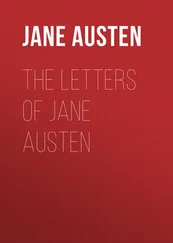Bannister was best known for his low roles. Leigh Hunt claimed that ‘no actor equals him in the character of a sailor’. 72The sailor, Jack Junk, in Thomas Dibdin’s adaptation of Kotzebue’s The Birth-Day was one of his best-loved roles. Bannister was also praised for his ability to transform himself into many different roles: ‘The greatest comedians have thought themselves happy in understanding one or two characters, but what shall we say of Bannister, who in one night personates six, and with such felicity that by the greatest part of the audience he is sometimes taken for some unknown actor?’ 73Leigh Hunt was thinking, in particular, of A Bold Stroke for a Wife , where Bannister transmigrated into five different characters. However the comic after-piece, Of Age Tomorrow , that Austen saw in Southampton was also used as a vehicle for Bannister’s versatility.
Thomas Dibdin adapted Of Age Tomorrow from Kotzebue’s Der Wildfang . Dibdin had already adapted Kotzebue’s The Birth-Day and The Horse and Widow . 74Michael Kelly, in his Reminiscences , records that Bannister persuaded Kelly and Dibdin to adapt Der Wildfang for Drury Lane. 75Kelly describes Of Age Tomorrow as a great favourite. The ballad ‘No, my love, no’, according to Kelly, was ‘the most popular song of the day … not only to be found on every piano-forte, but also to be heard in every street’. 76
Dibdin’s musical farce showed Bannister adopting three different disguises in his endeavours to woo his lover, Sophia, who is guarded by a dowager aunt, Lady Brumback, who stands to lose half her fortune if her niece marries. Bannister’s disguise as Fritz the frizeur was extremely popular, especially for his comic rendering of a story of his master breaking his leg over a bannister, to which Lady Brumback remarks, ‘Poor fellow! I wish there were no Bannisters in the world’. 77Kelly wrote: ‘Bannister’s personification of the Hair Dresser, was excellent; had he served a seven years’ apprenticeship to the trade, he could not have been more au fait in it, nor have handled the comb, curling irons and powder puff, more skillfully.’ 78Bannister’s transformations into a Swiss soldier and a (cross-dressed) abandoned mother of a foundling child showed his powers of imitation at their very best. 79
The appearance of London stars at the French Street theatre may be attributed to the rising popularity of Southampton as a spa town. Charles Dibdin, the Southampton-born dramatist, 80partly ascribed this transformation to the increasing number of ‘genteel families who have made it their residence’, and also to the tourists who came to Southampton for the sea-bathing. 81Though the theatre had acquired a poor reputation by the end of the eighteenth century, a new playhouse was opened in July 1803 by one John Collins. 82
The French Street theatre also housed amateur theatricals from the local grammar school. The school’s headmaster, George Whittaker, was passionate about the theatre and encouraged his pupils to stage amateur theatricals for charitable purposes. In 1807 Home’s famous tragedy Douglas was acted for the benefit of British prisoners of war in France, to ‘an uncommonly crowded house’. 83In Mansfield Park , Tom Bertram’s comic remarks about the efficacy of schoolboys reciting the part of young Norval in Douglas may have been an echo to such performances lingering in Jane Austen’s memory of amateur theatricals.
Her comments a year later, in 1808, about the playhouse suggest that she had taken a dislike to its shabbiness: ‘ Our Brother [James] we may perhaps see in the course of a few days – & we mean to take the opportunity of his help, to go one night to the play. Martha ought to see the inside of the Theatre once while she lives in Southampton, & I think she will hardly wish to take a second veiw [ sic ]’ ( Letters , p. 155).
Another family descendant, Richard Arthur Leigh, observed that while Jane Austen was living in Southampton she became friendly with a Mr Valentine Fitzhugh, whose sister-in-law was an ardent admirer of Mrs Siddons who would assist her in dressing and make-up for her shows. 84There is, however, no record of any conversation that Austen might have had with Fitzhugh about the theatre, which is hardly surprising given that he was so deaf ‘he could not hear a Canon, were it fired close to him’ ( Letters , p. 160).
During the Bath and Southampton years Austen’s writing was put on hold. She had produced three full-length novels before leaving Steventon in 1801, and began working on them again in 1809. Biographers and critics have been puzzled by Austen’s eight-year silence, attributing it to her evident unhappiness and displacement. But perhaps Bath and Southampton simply had more to offer in the way of public diversions and amusements than Hampshire and Kent. At Chawton Austen turned her mind once more to her novels and, with the help and encouragement of her brother Henry, began to think about publication. When Jane spent time in London with Henry, negotiating with publishers, she rarely missed a chance to visit the London theatres.
Had the majority of Jane Austen’s letters not been destroyed after her death in 1817, we would have had a much more detailed sense of her passion for the theatre. But there is enough evidence in the few surviving letters to suggest that she was utterly familiar with contemporary actors and the range and repertoire of the theatres. Her taste was eclectic; she enjoyed farces, musical comedy and pantomime, considered to be ‘low’ drama, as much as she enjoyed Shakespeare, Colman and Garrick.
3
The year 1808 was a particularly busy one for Jane Austen. She spent most of the time travelling between her various brothers and family friends. After playing Mrs Candour in The School for Scandal at the Manydown Twelfth Night party, she visited the Fowles at Kintbury and in May she visited Henry and Eliza Austen at 16 Michael Place in Brompton. The latter two, whose love of the theatre went back to the home theatricals at Steventon, were delighted to live in close proximity to several famous London stars. The actress and singer Jane Pope lived next door to them at No. 17. She had been the original Mrs Candour in The School for Scandal , playing the part until she was in her sixties. By this time, she was the only member of the original cast left on the stage. 1Having herself played the part of Mrs Candour earlier that year, Jane Austen must have been amused to be living next door to the actress who had inspired the original role.
At No. 15 Michael Place was Elizabeth Billington, the celebrated soprano singer. John Liston the comedian lived at No. 21. 2Jane Austen stayed until July, enjoying the rounds of dinner-parties, theatre trips and concerts arranged by Henry and Eliza. Henry Austen owned his own box at one of the illegitimate theatres, the Pantheon in Oxford Street. 3The Pantheon had originally opened in 1772 as a place of assembly for masquerades and concerts, which were all the rage in the 1770s. 4Boswell and Dr Johnson visited and admired the magnificent building in 1772, and Fanny Burney distilled her own experience of the new Pantheon into Evelina ; her heroine is ‘extremely struck with the beauty of the building’ when she is taken to a concert there. 5
The Pantheon was converted into an opera house in 1791 but was destroyed by fire a year later, losing its hope of a royal patent to the King’s Theatre in the Haymarket. Thereafter the Pantheon was rebuilt and resumed its original function as a place of concerts and masquerades until 1812, when it reopened as the Pantheon Theatre, staging the usual mixed bill of burlettas and ballet to circumvent the licensing law.
Читать дальше












